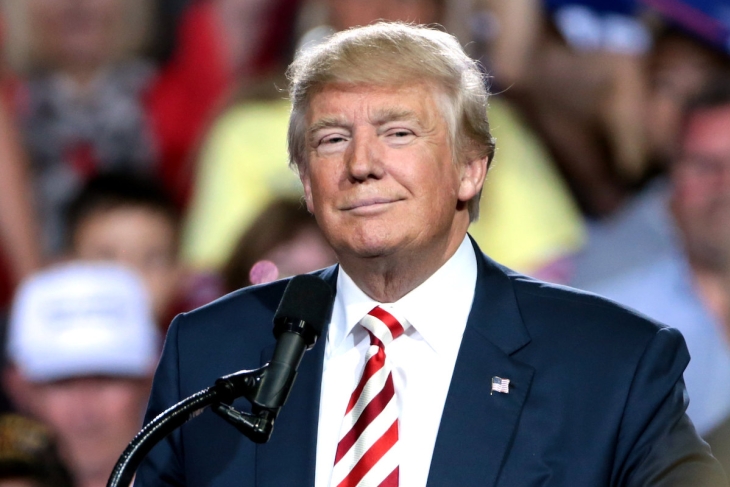Now that President Trump has soundly defeated Governor Haley in New Hampshire and thus appears to have sewn up the GOP nomination, it’s time to consider what a second Trump term may mean for education. I’ve examined the question before, but that was based on campaign literature and at the 30,000-foot level. A much more detailed and closer-to-the-ground agenda for education policy under Trump II can be found in a forty-three-page chapter by Lindsey Burke within the Heritage Foundation’s latest Mandate for Leadership volume. This exhaustive—thirty chapters, almost 900 pages—handbook for reshaping the federal government and its policies and programs is intended to guide the next conservative administration. (As I write, we can assume that means Trump, never mind his patchwork version of conservatism.)
This doorstop of a tome, the ninth in a quadrennial series of bulky “what to do when elected” manuals brought forth for every presidential election, is serious and angry. (Though it often invokes Reagan, it displays none of his sunny optimism.) Subtitled “The Conservative Promise,” it’s part of an ambitious undertaking called “Project 2025,” which (says Wikipedia) “envisions widespread changes across the entire government, particularly with regard to economic and social policy and the role of the federal government and federal agencies.” Established in 2022, the project also seeks to recruit lots of eager conservatives to come to Washington to replace all those appointed officials and civil servants that sometimes get termed the “deep state.”
While nobody can be certain that the unpredictable Trump will follow this (or any) blueprint, serious observers expect it. A trio of veteran Washington Post reporters wrote in November that:
Much of the planning for a second term has been unofficially outsourced to a partnership of right-wing think tanks in Washington. Dubbed “Project 2025,” the group is developing a plan, to include draft executive orders, that would deploy the military domestically under the Insurrection Act, according to a person involved in those conversations and internal communications reviewed by The Washington Post.
The Heritage book sets forth, often in minute detail, what the Trump team is supposed to change, and its chapters were written by people who have considerable experience with these issues. Lindsey Burke, for example, has been working at Heritage since 2008 and has headed up the organization’s ed-policy team for the past seven years.
Predictably, she’d like to abolish the U.S. Department of Education and asserts that the federal role in K–12 “should follow the path outlined by Milton Friedman in 1955, wherein education is publicly funded but education decisions are made by families.” But she’s well aware that many missions, programs, billions, and interests are entangled here, and knows better than simply to cry “down with it all.”
So many of her prescriptions take the form of dismantling, relocating, and block-granting. Many of ED’s programs—including the big Title I and IDEA programs—she would move to the Department of Health and Human Services (while also converting them to “formula block grants”), in effect recreating the old Department of Health, Education, and Welfare (HEW). I admit to not quite grasping how shifting such responsibilities to an even larger federal bureaucracy is viewed as progress—I guess because HHS is thought to be less vulnerable to the influence of teachers unions and other education interest groups. In similar fashion, she would dispatch Indian education to the Interior Department, vocational and career education to the Labor Department, statistics to the Census Bureau, and “impact aid” to the Pentagon.
Yet there’s more going on in these pages than outsourcing. Page after page admonishes the next administration to repeal or rescind a host of Biden-era regulations, from those putting limits on charter schools to those advancing “disparate impact” in civil rights and school discipline to those (more than I knew!) requiring government attention or protection to nonbinary students.
More pages take on procedural challenges that Burke wants made, such as reforming ED’s “negotiated rulemaking” process and—as urged by AEI’s (and Fordham’s) Ian Rowe—adding “family structure” to the categories by which NAEP data are disaggregated.
Even as she would stop (or outsource) much of what the department does, she doesn’t shy away from adding. Half the chapter addresses “new policy priorities for 2025 and beyond.” These range from “prohibiting compelled speech” to passing a federal “Parents’ Bill of Rights” to equipping parents and students (over eighteen) with a “private right of action to seek injunctive and declaratory relief” if denied access to various forms of data. Of course she also urges Congress to create multiple forms of school choice, such as a “federal scholarship tax credit that would incentivize donors to contribute to nonprofit scholarship granting organizations” and creating ESAs for students enrolled in Bureau of Indian Education schools.
Some recommendations display the schizophrenia that affect many conservatives torn between wanting Uncle Sam to advance their favorite themes and causes and wanting Washington simply to get out of the way. Thus, for example, Title I dollars would be entrusted to parents to “help pay for private learning options” but then “the federal spending should be phased out....”
I resonate with a fair portion of what’s in these pages even as I view much of it as fantasyland. But my personal preferences aren’t nearly so consequential as recognizing that Trump II is quite likely to treat the entire volume as a serious playbook, a “mandate” for their own singular form of “leadership.” Particularly if they find themselves working with a likeminded (and functional?) Congress, lots of this could well come to pass.


